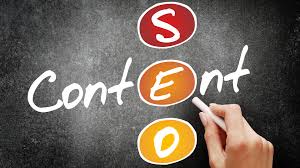Complete Guide For Beginners
Search engine optimization or SEO is a complex process involving many types of numbers. All SEO types have the same goal: to optimize a website for greater visibility in search engines.
In this post, you will learn different types of SEO and what SEO technique will apply for each type.
Types Of SEO
Let's start with a quick definition of what SEO is.
SEO is the process of creating a website that is easy for users to understand search engines and friendliness. The overall goal of SEO is to increase organic traffic from search engines by improving the positions displayed in the SERPS for various search terms.
In the beginning (think as early as 2000), SEO was simple but the entire SEO process has become complicated over the years.
When optimizing a website for search engines, you have to consider hundreds of rules to satisfy various search engine ranking factors and at the same time keep your users happy.
To make it easier to handle, the SEO industry has come up with different types of SEO. Each type is responsible for many SEO rules.
It is important to understand that these subsets of SEO are not a separate process, it is a way to break a complex process into many smaller processes that are easier to manage.
So, Types Of SEO In Digital Marketing:
1.Technical SEO
2.On-Page SEO
3.Content SEO
4.Off-Page SEO
5.Local SEO
6.Mobile SEO
7.ECommerce SEO
The most important are technical, on-page, and Off-page SEO.
Technical SEO
Technical SEO is actually the name meaning technical parameters that affect the visibility of a website in search engines.
The main goal of technical SEO is to ensure that search engine crawlers can crawl and index a website without any problems.
The most important technical SEO guidelines are:
To ensure that your engines can access your website properly, check your robots.txt, and optimize it.
Add and verify your website with Google Search Console and specify your preferred domain.
Use the COVERAGE report to find and fix crawl errors.
Create an XML sitemap and submit to all major search engines.
Optimize your site structure and URL structure.
Follow SEO Friendly Web Design
Create websites that load fast on both desktop and mobile devices.
On-Page SEO
SEO on the page has to do with the page itself and make it friendly for search engines and users.
It should be noted that search engines view a website as a whole, ranking is done on a page-level basis.
This is why it is important to focus on optimizing every page on your website.
The most important on-page SEO guidelines are:
Customize Your Page Title. This is an important SEO factor. The page titles are shown in the search results and should be interesting for users to click. The title of the page should also give the search engine enough clue to the bot as to what the page content is.
Optimize your H1 tag. While the page title is shown in the SERPS, the H1 tag is shown as the heading of the page. A customized page has only one H1 tag and usually has the same values as the page title.
Optimize your titles. A page must have a subtitle (H2, H3) for sections other than the H1 tag. In the case of long-form content, subheadings make the page easy to read by users and scanned by the crawler.
SEO for images. Any images used on the page must be properly optimized, otherwise, search engines do not understand what they represent. Things like optimization of a filename, file size, and ALT text are important for image SEO.
Page formatting. Publishing a page with text and images without spending time to beautify content is not a good SEO practice. Although Google cannot view a page like a human, they have ways to understand how a page looks or if it is full of ads and popups and is taken into consideration during the ranking process.
Content-SEO
Content SEO is a subset of on-page SEO. Content SEO is about the quality of the content and how to improve it.
Because it is a very important SEO success factor, it is considered by many to be one of the types of SEO. However, in many cases, you can find content guidelines under on-page SEO, which is also a correct approach.
To achieve this, you can follow these guidelines:
Start your content creation process with keyword research. Find the SEO keywords that are important to your website and include them in your content.
Go a step further and look at long-tail keywords and semantically related (or LSI) keywords, and add them to your title, title, and main content.
Publish content that is thorough and lengthy so that users can get enough clues to understand the context of their content.









1 Comments
Don't build links and confirm your content is amazing. this is often faraway from the reality ... In fact, even Matt Cutts of Google said "Links are still the simplest way that we've found to get how relevant or important somebody is... "
ReplyDeletecontent marketing